
The Senior Statesmen of Virginia has sponsored the 5th Congressional District candidates’ forums for many years. All of the candidates for this year’s August forum were invited: Jane Dittmar (D), Tom Garrett (R), Stephen Harmon (Libertarian), and Yale Landsberg (Independent). Only Jane Dittmar and Tom Garrett agreed to participate in this forum. The candidates spoke at our Wednesday August 10, 2016 meeting, which was well attended with several hundred standing. Bob Gibson moderated the meeting. A podcast is available.
[display_podcast]
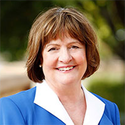 Jane Dittmar (D) is the immediate past chair of the Albemarle County Board of Supervisors and former representative of the Scottsville District. Through her position as supervisor, she served on the Governor’s Broadband Advisory Council.
Jane Dittmar (D) is the immediate past chair of the Albemarle County Board of Supervisors and former representative of the Scottsville District. Through her position as supervisor, she served on the Governor’s Broadband Advisory Council.
Jane is a certified mediator for both General District and Circuit Courts and has served as court coordinator for the General District, Juvenile and Domestic Relations, and Circuit courts of the City of Charlottesville and the counties of Albemarle, Fluvanna, Greene and Louisa. She is also a principal in the Positive Solutions Group and a business consultant specializing in strategic planning. Jane’s background is business and she has owned and worked with many businesses in the Commonwealth particularly when she served as president of the Charlottesville Regional Chamber of Commerce from 1992-2000.
Jane became a Virginian when she was six years old, attending Arlington County Public Schools after her family moved from rural Illinois. She graduated from the University of Virginia where she received a degree in Economics. Since then, Jane attended the UVa Darden School’s Executive Program and Virginia Tech’s Center for Public Administration and Policy. Over the past 40 years, she has lived in Nelson, Fluvanna, and Albemarle Counties, and the City of Charlottesville.
Jane resides with her husband, Frank Squillace, in Albemarle County. They have raised six children (Will, Mary, Virginia, Leia, Jed, and Joe), four of whom are in college.
 Tom Garrett (R) is in his second term as state senator representing the 22nd District. He earned both his Bachelor’s and Law Degrees from the University of Richmond, and began his service to our country with six years in the Army. During that service he honed his leadership skills, had an opportunity to work with great American patriots, and fight for the Constitutional rights we hold dear.
Tom Garrett (R) is in his second term as state senator representing the 22nd District. He earned both his Bachelor’s and Law Degrees from the University of Richmond, and began his service to our country with six years in the Army. During that service he honed his leadership skills, had an opportunity to work with great American patriots, and fight for the Constitutional rights we hold dear.
In 2007, Tom entered public service in a new way. That year he challenged and defeated a two-term incumbent for the office of Commonwealth’s Attorney in Louisa. Tom won that election by 17 percent. It was the first time in decades that an incumbent countywide office holder was defeated – and the first Republican countywide candidate to win since Reconstruction.
In 2011, Tom was elected as the state senator for the 22nd district following a reshuffling of district borders that saw the 22nd moved eastward and into the 5th, 6th, and 7th Congressional districts. Tom won a 5-way nomination contest and subsequently won a resounding general election contest against an accomplished Democrat opponent, despite being outspent nearly 2-to-1.
In the Senate, Tom has focused on expanding liberty, reclaiming our Constitutional rights, fiscal responsibility and restraint, and common sense reductions in the size and scope of government.

Bob Gibson (moderator) is a senior researcher at the Academy for Civic Renewal, a part of the University of Virginia’s Weldon Cooper Center for Public Service. He has served eight years as executive director of the Sorensen Institute for Political Leadership prior to joining the academy on July 1.
Program Summary
Attendance at the forum was outstanding with an overflow crowd and standing room only. The article below appeared in the August 11, 2016, edition of The Daily Progress (page one, top of the fold!), and was posted online.
In first debate, Garrett and Dittmar discuss
health care, guns and Trump
BY MICHAEL BRAGG
Aug 10, 2016
Two candidates for Virginia’s 5th Congressional District attended their first of several scheduled debates on Wednesday, giving their takes on several topics such as health care spending, public safety, environmental issues, voting rights and the economy, to name a few.
Democratic candidate and former Albemarle County Board of Supervisors Chairwoman Jane Dittmar and Republican candidate Sen. Tom Garrett, R-Buckingham, attended the Senior Statesmen of Virginia’s event.
The heavily attended forum at the Senior Center was moderated by Bob Gibson, senior researcher at the University of Virginia’s Academy for Civic Renewal, which is a part of the Weldon Cooper Center for Public Service.
Many of the questions asked by Gibson were submitted in writing from audience members.
One of the first questions for the candidates was on health care and spending for it. Dittmar used her time to defend the Affordable Care Act, adding that there is a need to examine and improve it, rather than fighting in Congress to repeal it or keep it.
Garrett argued against the effectiveness of the ACA, commonly known as Obamacare, and suggested taking a step back and looking at other ways to address health care need and cost.
Garrett then was given the chance to respond first to a question on public safety and gun policies. He used his time to proclaim his support for the Second Amendment and pointed out that other weapons can be used to harm others, too.
“Ultimately, the problem I don’t think is guns,” he said. “The problem is violence.”
Dittmar responded by saying she thinks there should be universal background checks for gun purchases.
“We need to make sure that people who shouldn’t own guns are not allowed to buy them,” she said.
Early in the forum, a question came up regarding a local Gold Star family who spoke at the Democratic National Convention. After Ghazala and Khizr Khan — the Muslim-American couple whose son died in 2004 serving with the U.S. Army in Iraq — spoke about their son, Capt. Humayun S.M. Khan, they criticized Republican presidential nominee Donald Trump and his immigration proposals.
The Dittmar campaign took the opportunity to ask the Garrett campaign to join other
Republican leaders and distance themselves from Trump’s comments and response.
Garrett responded first by saying the extent to which Trump criticized the family was not good and that Trump “is a smart man who sometimes picks dumb words.” He then spoke highly of Humayun Khan.
“Having worn the uniform, knowing soldiers who paid the ultimate sacrifice, having friends who lost an arm, specifically in one instance, I think that Humayun Khan is every bit as much or more of a hero than any one of those young men and women with whom I served,” he said.
Some audience members audibly disagreed with Garrett at times during his full answer, and some held up pocket-sized copies of the Constitution, a gesture Khizr Khan made famous at the DNC when he asked Trump if he had ever read the Constitution.
Dittmar responded, calling Trump’s comments to the Khan family “reprehensible” and that she was pleased with the Republicans who have called Trump out for his comments.
“It’s more than tone, it’s more than forgetting the best way to communicate,” she said. “There is an attitude there, and he disrespected a Gold Star family.”
It was one of a few times on Wednesday that members of the audience audibly reacted negatively to comments made by Garrett, but the most frequent response was applause for both candidates. Both candidates, too, were civil and disagreed on subject and policy without making personal attacks. Dittmar and Garrett also complimented one another when they agreed on certain issues or how best to address them, such as equal work for equal pay.
Before running for the 5th District, Dittmar was the previous chairwoman to the Board of Supervisors and the representative for the Scottsville District. She also served the Governor’s Broadband Advisory Council.
Dittmar is a certified mediator for general and district courts and is also a principal in Positive Solutions Group, a firm that specializes in strategic planning.
Dittmar served as the president of the Charlottesville Regional Chamber of Commerce from 1992 until 2000.
Garrett is currently serving his second term as a state senator and was the Commonwealth’s Attorney for Louisa prior to that. Garrett is also a U.S. Army veteran.
Libertarian candidate Stephen Harmon and independent candidate Yale Landsberg were both invited to the forum but only Garrett and Dittmar confirmed their participation in the forum, according to a news release from the Senior Statesmen of Virginia.
Wednesday’s forum was the first of a few debates currently scheduled between the two candidates.
The next is set to take place at the Appomattox Inn & Suites on Sept. 26. The debate is hosted by the Lynchburg Regional Business Alliance and Appomattox Chamber of Commerce and will focus on economic development issues.
The next two are scheduled to take place in the Charlottesville area.
Dittmar and Garrett will debate at UVa’s Frank Batten School of Leadership and Public Policy at 6 p.m. Sept. 28. The other scheduled debate is set to take place at Piedmont Virginia Community College on Oct. 10.
Michael Bragg is a reporter for The Daily Progress. Contact him at (434) 978-7265, mbragg@dailyprogress.com or @braggmichaelc on Twitter.

 Alfred S. Thomas Jr. was appointed Charlottesville chief of police effective May 23, 2016. Chief Thomas served as chief of police for the City of Lexington, Virginia, since 2010. During his time in Lexington, he has directed a number of major initiatives, including operational reorganizations, upgrades to emergency communications infrastructure, implementation of mobile data terminals and digital in-car camera systems, and expanded outreach to city youth with the implementation of multiple programs including a junior police academy, police summer camp, and a regional high school internship program.
Alfred S. Thomas Jr. was appointed Charlottesville chief of police effective May 23, 2016. Chief Thomas served as chief of police for the City of Lexington, Virginia, since 2010. During his time in Lexington, he has directed a number of major initiatives, including operational reorganizations, upgrades to emergency communications infrastructure, implementation of mobile data terminals and digital in-car camera systems, and expanded outreach to city youth with the implementation of multiple programs including a junior police academy, police summer camp, and a regional high school internship program. Albemarle County named Ron Lantz as chief of police effective June 1, 2016. Chief Lantz served as Albemarle’s deputy chief of police where, since 2012, he assisted the chief of police in planning and directing the many activities of the Albemarle County Police Department including providing supervision for 115 of the 129 sworn officers in the functional areas of patrol, traffic, school resource, crime prevention, and animal control. In addition, Chief Lantz was responsible for leading the implementation of the County’s Geographic Based Policing initiative which was launched in 2012.
Albemarle County named Ron Lantz as chief of police effective June 1, 2016. Chief Lantz served as Albemarle’s deputy chief of police where, since 2012, he assisted the chief of police in planning and directing the many activities of the Albemarle County Police Department including providing supervision for 115 of the 129 sworn officers in the functional areas of patrol, traffic, school resource, crime prevention, and animal control. In addition, Chief Lantz was responsible for leading the implementation of the County’s Geographic Based Policing initiative which was launched in 2012.

 Dahlia Lithwick is a senior editor at Slate Magazine, and in that capacity, writes the
Dahlia Lithwick is a senior editor at Slate Magazine, and in that capacity, writes the 
 Jane Dittmar (D)
Jane Dittmar (D) Tom Garrett (R)
Tom Garrett (R)
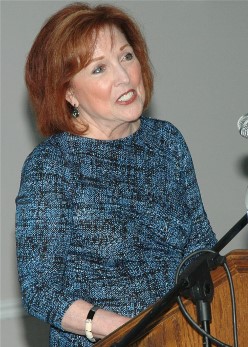 Meredith Richards spoke at our Wednesday June 8, 2016 meeting about rail service in Virginia and the Northeast Corridor. The program was moderated by SSV board member Rich DeMong.
Meredith Richards spoke at our Wednesday June 8, 2016 meeting about rail service in Virginia and the Northeast Corridor. The program was moderated by SSV board member Rich DeMong.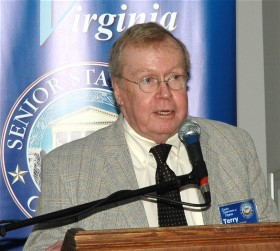 Three of our legislators spoke at our Wednesday May 11, 2016 meeting. Following the presentation, questions were taken from the audience. The program was moderated by SSV board member Terry Cooper (left).
Three of our legislators spoke at our Wednesday May 11, 2016 meeting. Following the presentation, questions were taken from the audience. The program was moderated by SSV board member Terry Cooper (left).
 Ashley Deeks is an associate professor at the University of Virginia Law School. Prior to joining the Law School’s faculty she was the assistant legal adviser for political-military affairs in the Legal Adviser’s Office at the Department of State where, among many other duties, she advised on intelligence issues. She has also served as a fellow at the Council on Foreign Relations and the Center for Strategic and International Studies. Ms. Deeks is a cum laude graduate of Williams College and an honors graduate of the University of Chicago Law School.
Ashley Deeks is an associate professor at the University of Virginia Law School. Prior to joining the Law School’s faculty she was the assistant legal adviser for political-military affairs in the Legal Adviser’s Office at the Department of State where, among many other duties, she advised on intelligence issues. She has also served as a fellow at the Council on Foreign Relations and the Center for Strategic and International Studies. Ms. Deeks is a cum laude graduate of Williams College and an honors graduate of the University of Chicago Law School. Frederick P. Hitz is an adjunct professor at the Law School and the Batten School of Leadership and Public Policy. For more than 30 years, while ostensibly being a lawyer in a buttoned-down private practice, he served in various capacities at the Central Intelligence Agency, both in line positions such as deputy director for Europe in the Directorate of Operations and in staff positions like Inspector General. He has written extensively on espionage and intelligence issues. His publications include “The Great Game: the Myth and Reality of Espionage” and “Why Spy? Espionage in an Era of Uncertainty.” Mr. Hitz is a graduate of Princeton University and Harvard Law School.
Frederick P. Hitz is an adjunct professor at the Law School and the Batten School of Leadership and Public Policy. For more than 30 years, while ostensibly being a lawyer in a buttoned-down private practice, he served in various capacities at the Central Intelligence Agency, both in line positions such as deputy director for Europe in the Directorate of Operations and in staff positions like Inspector General. He has written extensively on espionage and intelligence issues. His publications include “The Great Game: the Myth and Reality of Espionage” and “Why Spy? Espionage in an Era of Uncertainty.” Mr. Hitz is a graduate of Princeton University and Harvard Law School.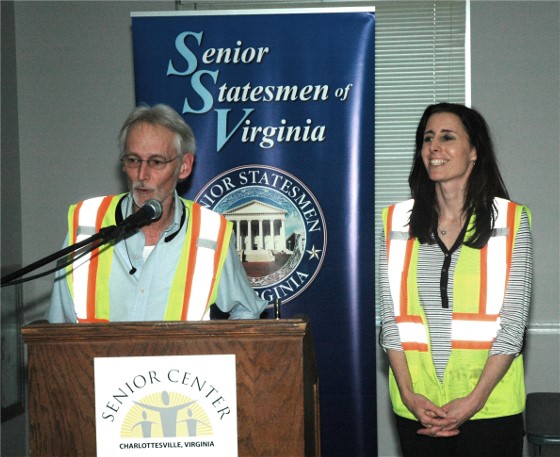
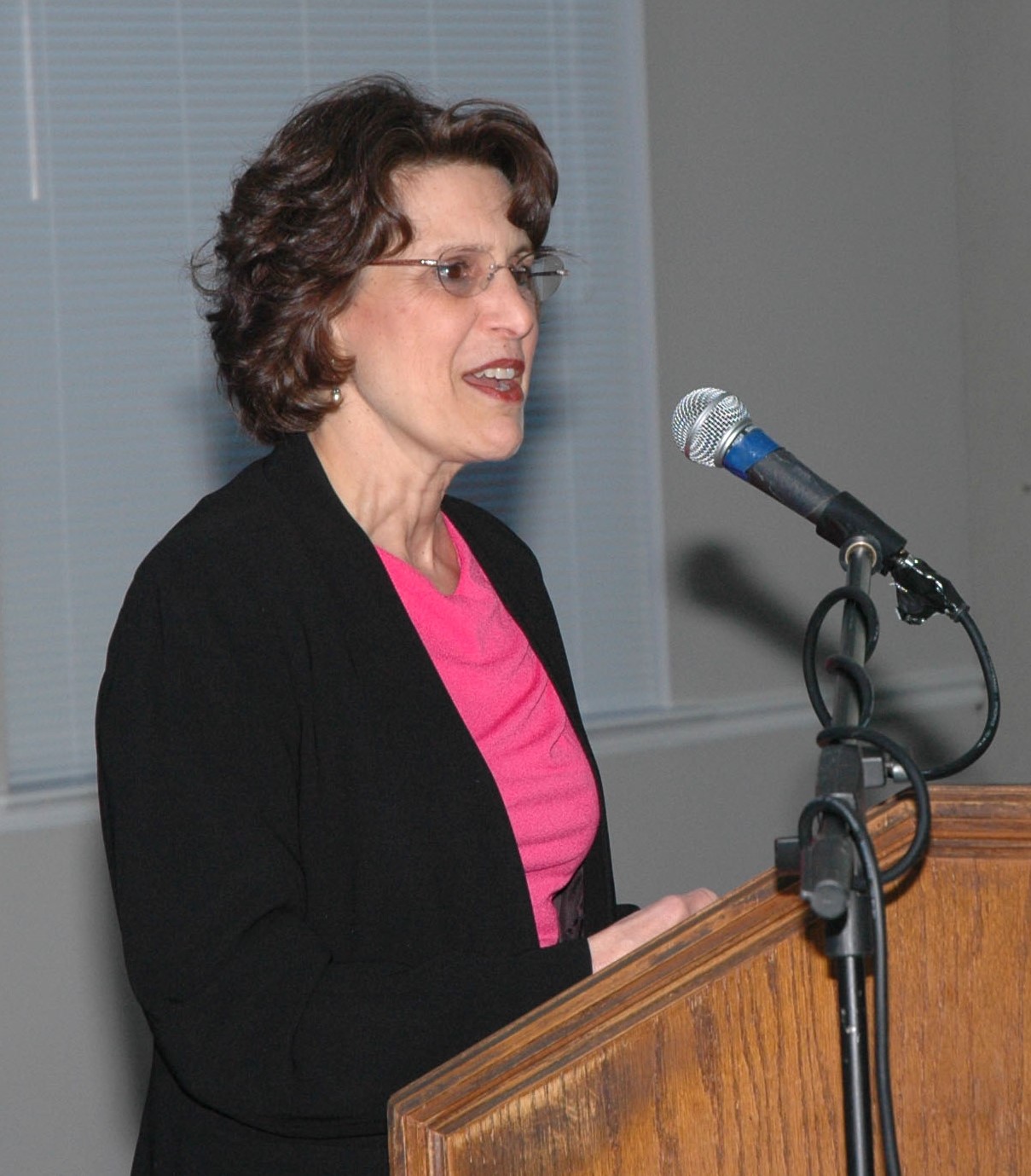
 Richard P. Shannon, MD is the executive vice president for health affairs at the
Richard P. Shannon, MD is the executive vice president for health affairs at the